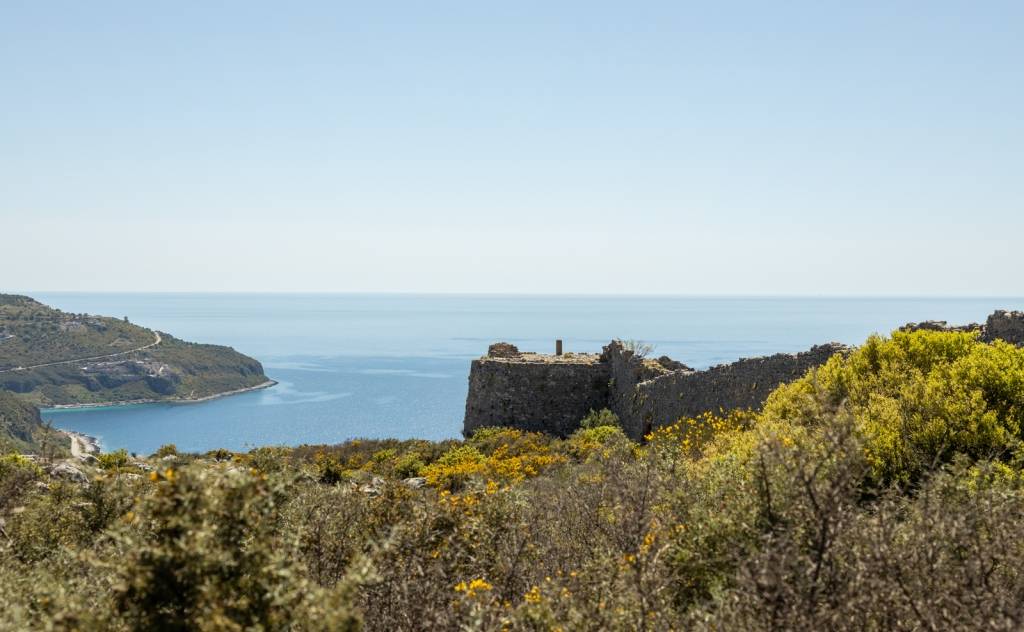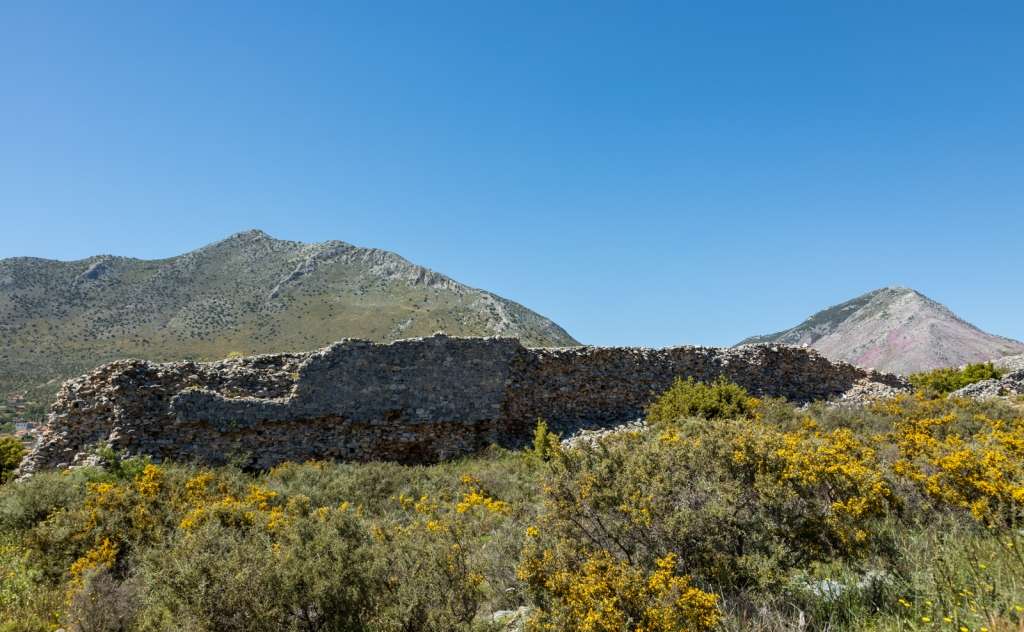Kelefa Castle
The castle of Kelefa is located in the middle of the route between the current village of Kelefa and the Gulf of Oitilo, built at an altitude of 245 metres. It dominates the area with its natural fortified position, created at the southern end of the Taygetos mountain range. The castle's location supervised the whole of Mylolagado, having visual contact with the vigilantes of the neighbouring settlements. The origin of its name from the verb "order (kelevo)" is connected with the light signals of the vigils. Sometimes, the castle is identified with the legendary castle of Maine, the exact location of which remains officially unknown.
The castle was built by the Turks around 1670 to control the people of Mani by order of the Grand Vizier Kioproulis. It is said that the castle was a reward to Mani pirate Liberakis Gerakaris (a member of the large Kosmas family) in order to subdue the Mani people. The castle of Kelefa was the seat of Hassan Pasha and was maintained by the Turks from 1670 to 1685 when the Venetians and their Mani allies conquered it. The Venetians perfected it and made it one of the strongest castles. In 1715, it was handed over to the Turks by treaty but was gradually abandoned.
The castle of Kelefa (estimated at approximately 13 acres) is square (in the plan), without elaborate masonry. It had relatively thin walls and four impressive circular towers. There was also a fifth one, which was demolished. The southern circular tower is the only one that survives in good condition. Inside there was a room covered with a dome, which probably served the needs of the guards. The castle's main entrance was on its southeast side, although today, there is access to it from the northeast. The bastion has a semicircular shape, and its interior was arranged in two areas, both roofed with an arch. There is a small built cistern on the highest plateau (the arch of which has now collapsed). Inside the castle, there is an elongated, large building referred to as an equipment warehouse. Also, between the east tower and the entrance of the castle, visitors can see the tank of the complex. It is a one-storey, stone building that is housed with an arch.
Unfortunately, the castle is not kept in good condition. Only the outer walls, the four towers, ruined buildings inside and only one cannon (out of the 58 that it once had) survive. According to Kevin Andrews (American writer and archaeologist), the castle has structural similarities with the court of Chania.





